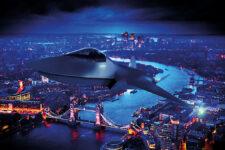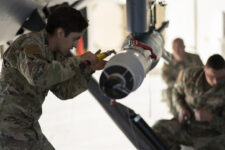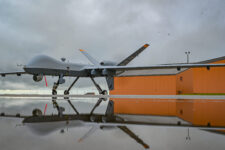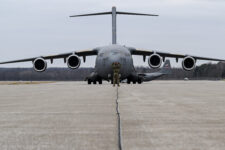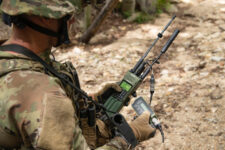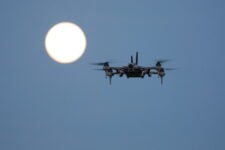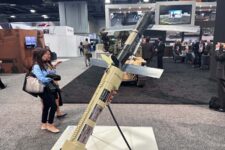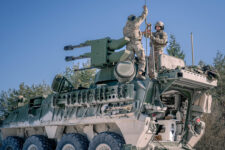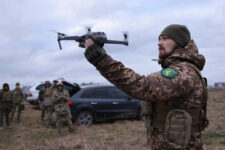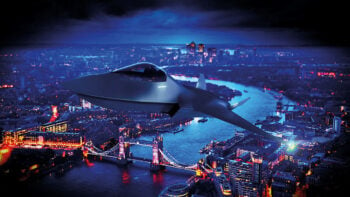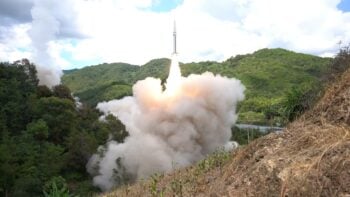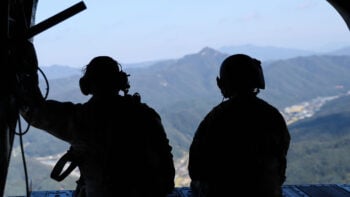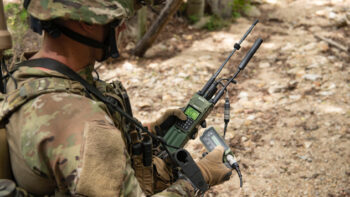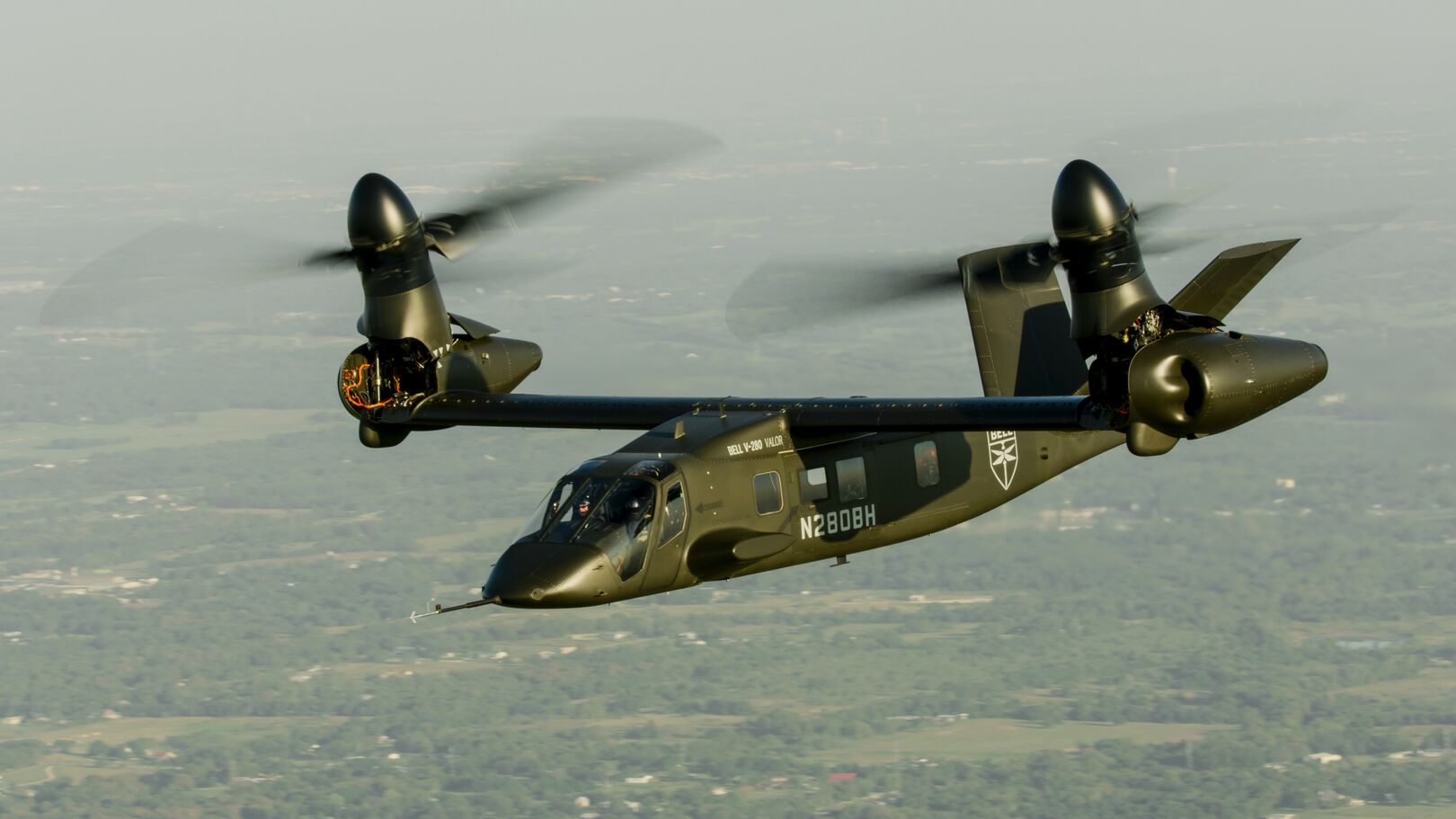
Bell’s V-280 Valor tiltrotor won the US Army’s Future Long-Range Assault Aircraft (FLRAA) competition. (Bell)
If conflict ever does break out between the US and China, it will force all of the Pentagon’s assets into the field. The potential for a Pacific conflict is part of the drive behind the Army’s procurement of the V-280 Valor, but as Rebecca Grant of the Lexington Institute opines below, it’s the service’s tactics that will decide the day.
When the Army announced the winner of its Future Long Range Assault Aircraft, the service stated it needs “tactical maneuver at operational and strategic distances.” While that can apply to many different regions in the world, combing through the fiscal 2025 budget request makes it clear FLRAA is going to be a keystone for the Army’s Indo-Pacific future.
The Army already has serious cash committed to the V-280 Valor, with $1.3 billion requested for FY25. And that money seems likely to be well spent: The V-280 is a third-generation tiltrotor — like the US Marine Corps’ V-22 — that can take off and land like a helicopter but fly high and fast like an airplane. It has a maximum range in excess of 2,000 miles and a speed over 300 miles per hour. Compared to the aircraft it will replace, the V-280 Valor flies more than twice as fast and far, and carries more troops, equipment, or supplies which enables more effective single-lift operations.
Congress is not expected to put up any fight about investing in FLRAA. But the bigger challenge for the Army with the V-280 may be convincing skeptics that inserting small groups of forces on disputed terrain features and islands of the South China Seas is a smart approach to countering China.
The V-280’s range and capabilities could become a significant factor in other theaters, including Africa. After being kicked out of Niger, the US is considering building a new base in Botswana, and the US has major policy initiatives in Angola. The distance between those two capitals is almost 900 miles. But let’s be honest: Any discussion about the most important mission sets the V-280 can do starts in the Pacific.
As the Army recognizes, the US homeland stretches 4,000 miles past Hawaii to Guam. The US is also committed to defend the Northern Marianas islands, and Palau. A 1951 treaty binds the US to support the Philippines if attacked — and Manila is another 1,500 miles beyond Guam. That’s a massive stretch of territory that the US military is pledged to defend, much of it over water with no operating bases nearby.
Given Chinese President Xi Jinping’s appetite for confrontation, it’s likely that in a conflict, the role for the Army in the Pacific will center on inserting forces to control short, sharp confrontations over islands and terrain features in the South China Seas.
The Army envisions “expeditionary operations in contested domains with few indications or warnings.” It includes four strategic roles: shaping security environments, preventing conflict, prevailing in large-scale ground combat, and consolidating gains to make the temporary permanent.
The V-280 Valor missions in the Pacific will be extremely useful in the first two roles: inserting forces to shape and control conflict. But that’s where the skepticism pops up. Even with a highly capable tiltrotor, the idea of inserting small groups of forces during a confrontation with China in the South China Seas seems risky.
The solution lies, in part, with tactics.
The Army is plenty capable of executing an air assault with its current fleet of CH-47s, UH-60Ms, UH-60Ls and AH-64s. A major exercise in January by the 101st Airborne Division (Air Assault) saw 1,000 soldiers in 76 helicopters conduct an air assault from Fort Campbell, Kentucky, to the Joint Readiness Training Center. While a success, the assault required several stops at “forward arming and refueling points” along the way.
Longer range air assault will enable ground forces “to converge through decentralized operations at extended distances.” Basically, the idea is to box in China by placing forces on islands or terrain features. Rapidly inserting forces can extend US sensor coverage and create options for positioning land-based fires.
Crucially, the US can also marshal forces outside China’s missile threat rings. For example, the V-280 Valor, sustaining at 240 knots, can deploy from Hawaii to the Philippines in 20 hours. Down the road, the V-280s may also be able to self-deploy, moving to the theater as unmanned aircraft and rejoining with crews at a forward location.
Operationally, the concept has a lot going for it, starting with the fact that it directly addresses known Chinese tactics. China’s recent conflicts such as the 1974 takeover of the Paracel islands involved swift strikes by small ground forces. China aims to take objectives before allies or the international community can respond, often while Chinese diplomats issue denials. The goal under this concept is for US forces to get out in front of China’s decision cycle with forces that can force China to back off or if necessary, engage China at a level below declared war.
Of course, that means flying right under the noses of China’s military. The Army recognizes the “exponential lethality, hyperactive chaos, and accelerated tempo of the multi-domain battlefield when facing a peer or near-peer adversary.” However, the threat is not yet a complete lockout scenario where an air campaign would have to roll back defenses and carve out corridors for operations. The V-280 has improved survivability features — including flying on the deck — to expand tactical options even in a thorny threat environment.
While adding V-280s to the mix will help, there is more the Army must do to succeed with its future long range air assault.
The number one requirement is quality information about the target area. The Army will have to design systems for cockpit information updates. Accurate assessments of hostile forces and disruptive threats such as electronic emitters en route will be essential. Improved long-range, long-endurance sensors like the High Accuracy Detection and Exploitation System (HADES) will serve this purpose. But, above all, the Army will have to remember to practice joint force coordination: The Air Force, Navy, and other components need advance notice to get their assets in place for any Army operations in the region.
No one is suggesting that this concept suits a major theater war. In contrast, the main selling point is controlling escalation, when policy calls for staying well below the threshold of major combat operations. Winning the struggle for a tiny island could help cap off conflict and steer clear of all-out confrontation with a nuclear-armed China.
Developing the new equipment and concepts for air assault over thousands of miles is an enormous challenge, just as it was in World War II. The US needs strategic agility in the Pacific islands, and the Army’s V-280 Valor will have to be a big part of it.
Dr. Rebecca Grant is Senior Fellow and Vice President of the Lexington Institute
